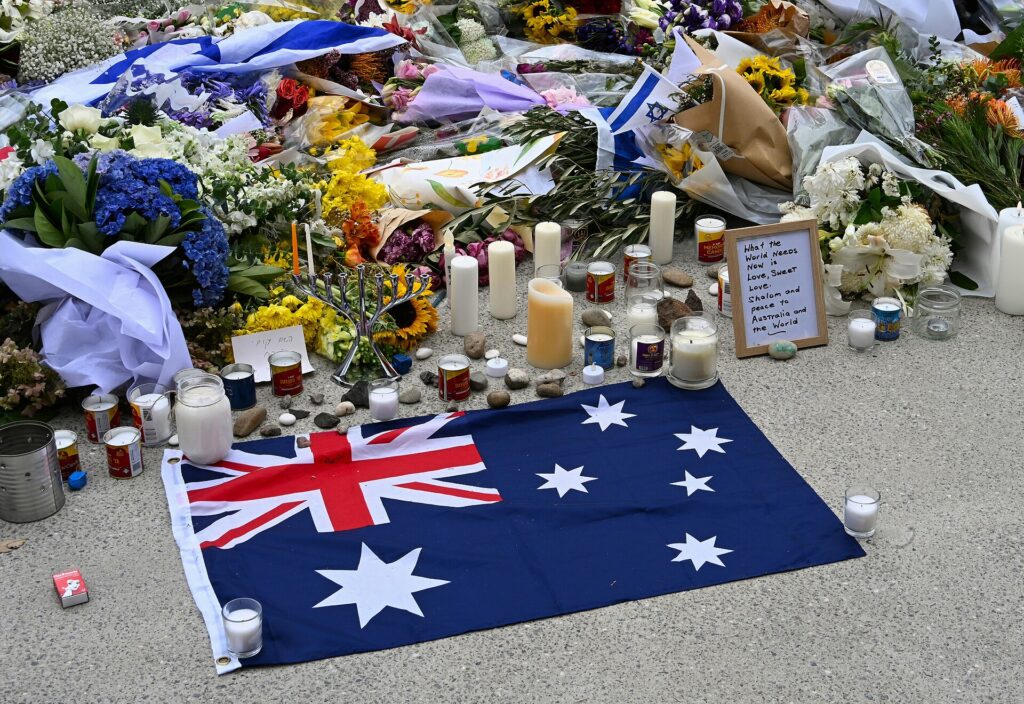IN THE MEDIA
Could this be the 1967 moment for the Islamic Revolution?
July 6, 2025 | Oved Lobel

The Australian – 6 July 2025
For more than 40 years, the Islamic Revolution that conquered Iran in 1979 has haunted the Middle East, expanding across the region despite its military and economic weakness.
With the openly declared goal of surrounding and destroying Israel, the Islamic Revolutionary Guard Corps established Arab branches or co-opted existing groups in Lebanon, Iraq, Yemen and the Palestinian territories, all in league with its client regime in Syria, ruled by the Assad dynasty.
With a regional empire spanning from Iran to Gaza, the components of which were referred to as the “axis of resistance”, Tehran had good reason to believe the Islamic Revolution was poised to finally achieve its longstanding goal of destroying the Jewish state.
Instead, what transpired on October 7, 2023, did not mark the beginning of the end for Israel but instead the beginning of the long arc of a boomerang that finally returned and demolished the imperial centre of the resistance axis.
Hamas chief Yahya Sinwar’s decision to invade Israel that day led to his death and the decimation of the IRGC’s Palestinian proxies – Hamas and Palestinian Islamic Jihad – followed quickly by the decapitation and shattering defeat of Hezbollah and then the collapse of the Assad regime.
Although Ansar Allah, generally referred to as the Houthis, remains intact and firing in Yemen, its missiles and drones generally have been ineffective and resulted in ruinous blows from Israeli and US airstrikes, reducing its weapon stockpiles and capabilities.
Then came the turn of the regime of the Supreme Leader of the Islamic Revolution, Ali Khamenei. On June 13, after months of telegraphing that it would do so, Israel launched a bombing campaign against the regime’s nuclear and ballistic missile targets, including the assassination of more than a dozen nuclear scientists and nearly the entirety of the military and IRGC leadership.
Israel quickly established total air superiority over much of Iran, destroying its air defences while Mossad teams on the ground in Iran destroyed missiles before Iran could properly retaliate.
The stunning loss of the entire command chain all at once disrupted the regime’s ability to co-ordinate any serious counterattack, while the Israeli air force progressively destroyed more and more launchers and missiles.
Then, on June 22, the US delivered the coup de grace to Iran’s nuclear program, dropping 14 “bunker busters” on two uranium enrichment sites, Fordow and Natanz, buried deep underground, likely destroying them.
In response to Israel’s operation, Iran fired several waves of ballistic missiles and drones. Although some missiles struck Israel and caused casualties and infrastructure damage, the volleys had no strategic effect.
Across less than a fortnight, Israel delivered the most crippling and humiliating blow to an imperial and revanchist jihadist enterprise that had poured all of its resources for decades into preparing for this war, tolerating almost complete political and economic isolation in pursuit of destroying Israel.
In the end, the battle that many expected to be a bang was in fact a whimper, with the regime completely powerless to defend itself or retaliate in any meaningful fashion.
Not a single component of the resistance axis could lift a finger while its overseers were quickly destroyed, with Khamenei himself cowering incommunicado in a bunker, too scared even to issue directives to his own regime lest he be assassinated.
More than a devastating military blow, however, this operation struck at the core of the ideology on which the entire Islamic Revolution and its resistance axis empire was founded, perhaps fatally. To be completely powerless in the face of Israeli attacks after decades of laying the groundwork for a multi-front war and chanting “death to Israel” is a dishonour from which it appears unlikely to recover.
When considering the regional transformation that may result from recent events, we cannot help but recall 1967.
Up until the 1960s, the ideology of pan-Arab nationalism, led first and foremost by Egyptian President Gamal Abdel Nasser, seemed to be ever-ascendant.
Then, across a few days in June 1967, Israel delivered such a decisive military blow to the surrounding Arab armies that the ideology imploded and disappeared, which helped pave the way for the Islamic Revolution to emerge as an answer to the failures of the nationalists.
Now the Islamic Revolution has suffered the same fate, its supranational ideology thoroughly discredited in cinematic detail in Gaza, Lebanon, Syria and now by the smoking ruins of Iran’s own missile and nuclear programs.
The chickens of the Islamic Revolution – responsible for numerous wars, hundreds of thousands of deaths and total destruction across the region, as well as the horrific oppression and immiseration of its own citizens – have finally come home to roost.
The regime may yet survive and, if it does, may redouble its oppression of its own population to reassert control in the face of this ignominy. It may even have enough highly enriched uranium and hidden centrifuges to eventually try and build nuclear weapons, although this is unlikely to succeed given the obvious Israeli intelligence penetration of the regime at every level.
But even if that unlikely dark future were to emerge, with Iran still run as a brutal Islamist dictatorship with nuclear weapons, it will likely look most like North Korea. It may still conduct piracy, kidnappings and terrorism, but no matter what happens, Iran’s days as an expansionist imperial power, successfully exporting the Islamic Revolution, accompanied by missiles and drones, across the region with impunity, are likely over.
Oved Lobel is a policy analyst at the Australia/Israel & Jewish Affairs Council.





